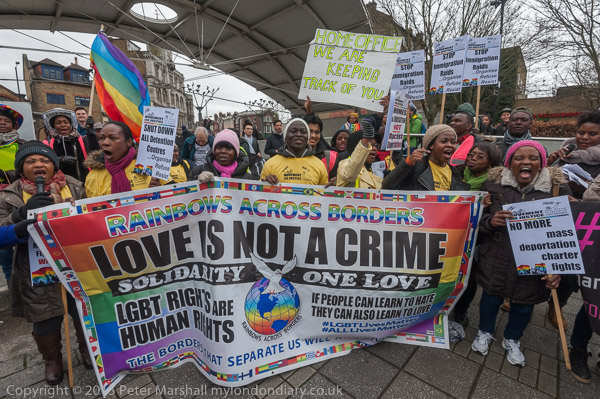The previous post on this walk I made on Sunday 29th January 1989 was Laundry, Timber and Glengall Road. My walk ended on the site of Peckham Arch at Canal Head, but the arch was only built five years later. Despite local opposition Southwark Council seems now determined to demolish this local landmark.
These houses are at 10-16 Peckham Hill St. 10 and 12 appear to be lived in although 12 seems to be in poor condition, while 14-16 are derelict with broken windows and corrugated iron over the ground floor door and window of 14. Now the all look rather tidier and expensive. I think all these houses probably date from around 1840 or a little later. A terrace of smaller houses at 34-40 a little further south is listed and looks to me roughly of similar date. These are larger and grander houses, with two boasting substantial porches. The one at right I suspect has at sometime been rebuilt – perhaps after war damage and looks as if this was done in a plainer style.
Plain flats with small balconies – large enough to perhaps put out a clothes horse or stand watching the street and enjoying a cigarette or a cup of tea. But the boarded up window at lower left and in one of those above the graffitied ‘LOVE ONE ANOTHER’ suggested to that this block was being emptied out for demolition. I wondered too what message had been painted over on the balcony – probably something short and crude.
Commercial Way is quite a long road, but my contact sheet gives a 100m grid reference which places these flats close to Cator St, and these flats, probably dating from the 1950s, have been replaced by more recent buildings.
I walked down the path following the former canal to Peckham High St, where you can still recognise the building that was Julian Jewellers, now a mobile phone shop, which also spills over into what was in 1989 Candyland. “SWEETER THAN THE REST – SPECIALISTS IN CUT PRICE CIGARETTES – 80 PECKHAM HIGH STREET” with two large cigarette adverts. Stiletto Expresso looks very closed in my picture – did it once sell shoes or coffee?The building in its place bears a slight resemblance but is now around twice the height.
The building at extreme right, mostly out of frame is also there, and until recently recognisable, but recently everything above the ground floor has been covered by an advertisement. The ground floor is now Mumasi Market.
The building on the left edge was demolished when the Peckham Arch was created in 1994., and I was standing where it now is to take this picture. The arch is now again under threat after an earlier proposal in 2016 for its replacement by a block of flats was defeated by determined local opposition. But Southwark Council still appear determined to remove it, despite it having become a landmark feature of Peckham, now much loved by residents and a great space for community activities.
The council make clear why they want to remove the arch, basically so they can build more flats in “a significantly larger development on site” with “more commercial and/or community space on the ground floor“. They do make a few other minor points, such as the current inconvenient cycle route, which could easily be remedied with the arch still in position. They claim that 80% of local residents in 2016 did not want to see the arch retained, which seems at odds with the views expressed by residents to the local press.
Whenever I’ve been in Peckham on a Saturday afternoon there has been something happening under the arch (and it’s particularly useful when it be raining.) Here’s one example:

Wikipedia states “The Arch was constructed in 1994 and was designed by architects Troughton McAslan as monument to and as instigator of regeneration in a borough which had suffered from years of decline.” It’s article goes on to quote various criticisms of the 2016 plan to demolish the arch. Although it has proved itself an ‘Asset of Community Value’, Southwark Council turned down the application by local residents to have it listed as such as they wanted to demolish it, though it seems impossible to read the reason they gave on the spreadsheet on the council site.
My walk on Sunday 29th January 1989 ended here on Peckham High Street, a convenient place to catch a 36 bus back to Vauxhall for my train home. The first post on this walk I made on Sunday 29th January 1989 was
Windows, A Doorway, Horse Trough and Winnie Mandela










































































